Introduction
This article about the history of relief printing techniques is in 3 parts corresponding to 3 different uses of this technique:
- Beginning (500BC-100AD and 100-900).
- Printing and relief printing (900-1450, 1450-1600, 1600-1800, 1800-1900, after 1900).
- Relief printing and artists.
NB: to learn about these techniques of relief printing and how to use them yourself, go here.
Beginning
500 BC – 100 AD
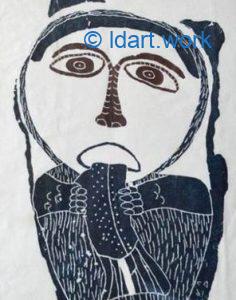
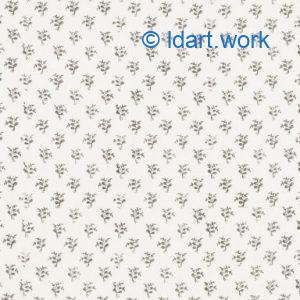
Relief printing techniques are first used by the Egyptians to print on fabric.
Stone is used by Chinese artists to make the seals they need to sign their artworks, but generally speaking, only ethnic groups with no access to wood, like the Inuits, use this material.
100 -900
In China, pictures and texts are cut on a same plank and then printed on paper (discovered around 200-300 AD depending of who you ask): in any case, it significantly promotes erudition especially under the Long dynasty (961-1279).
These pictures and texts are then put together to make the 1st books: the older one known is called Sutra of Diamond (868).
Printing and relief printing
900 – 1450
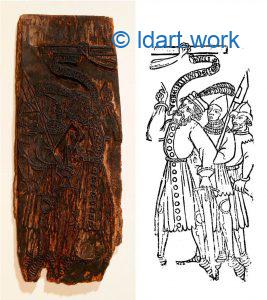
The secret of paper making and relief printing techniques is brought to Europe through the Arabs who, as early as the 8th century, learn it from the Chinese: the 1st known woodcut is called Bois Protat (made around 1375/1400).
Monks are the ones generally making images: inspired by piety, distributed by religious orders, they are intended to evangelize the populations. When pope Clement IV organizes the gifts of indulgences, the production of these images increases dramatically.
Printmakers get their inspiration from stained-glass windows or paintings found in churches; the pictures come with a short text, first hand-written, then cut in the woodblock itself. Later, someone finds out that it is possible to glue the pieces of paper back to back and to bind them together in order to make books.
Secular pictures like heroes of chivalry begin to appear around 1420, and each region has its own style.
1450 – 1600
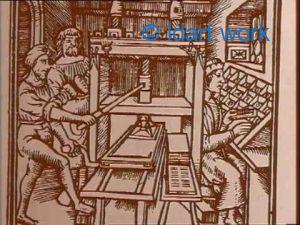
Gutemberg (1400-1468) makes the first printing machine in Europe (the Chinese had used movable types as early as the 9th century, it seems, and the Korean in the late 14th century, but it didn’t catch up, certainly due to the complexity of these languages) : texts and pictures are separated and the prints illustrate the stories, but each print can also be seen as stand-alone.
Some printmakers start to sign their artworks.
Specialized craftsmen take care of each stage of the book-making: creation of the text, illustration, printing, and so on.
Dürer (1471-1528), Holbein (1497-1543), Cranach the Old (1472-1553) are from this period. They not only use relief printing techniques, but also etching, mezzotints, and drypoints to make prints which later will be be published together as books.
1600 – 1800
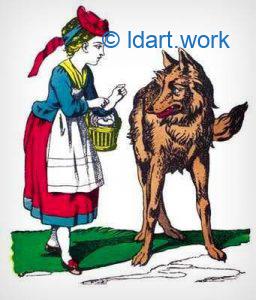
Relief printing is abandoned in favor of printing techniques on hollow metal allowing a larger edition of prints, and shades of gray or color imitating paintings.
During this period, relief printing techniques are only used to produce popular pictures like Les Images d’Epinal (see, on the blog of this site, an article I wrote about the town and its Imagerie).
1800 – 1900
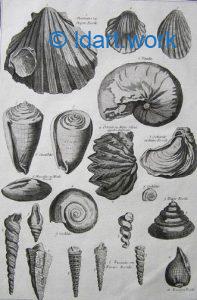
Relief printing techniques make a come-back thanks to a new method called wood engraving: it is now possible to make pictures as detailed as the ones made on metal, and these pictures will very often be used in romantic vignettes and documentary plates (especially for encyclopedia).
After 1900
Quicker methods like serigraphy, photogravure and offset again replace relief printing techniques in the printing industry, and printmakers’ workshops disappear.
Relief printing techniques are only used by artists as a way to express themselves using the specific characteristics of these techniques.
Relief printing and artists
16th century
with Durer, Holbein and Cranach as a way to imitate paintings (see above).
19th century until now
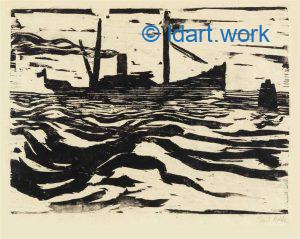
It starts with an interest for primitive arts, then go to Expressionist movements and the discovery of Japanese prints.
Relief printing is a way to express strong feelings and become an art by itself, sometimes preferred to painting.
Gaughin, Van Gogh, Vlaminck, Matisse, Dufy, Munch, Kirchner, Schmitt-Rottluf, Nolde, Dix, Klee, Arp, Chagall, Miro, Picasso… are all artists that partly or mainly use relief printing techniques to express themselves.
Good to know: The pages about the techniques of relief printing are here.